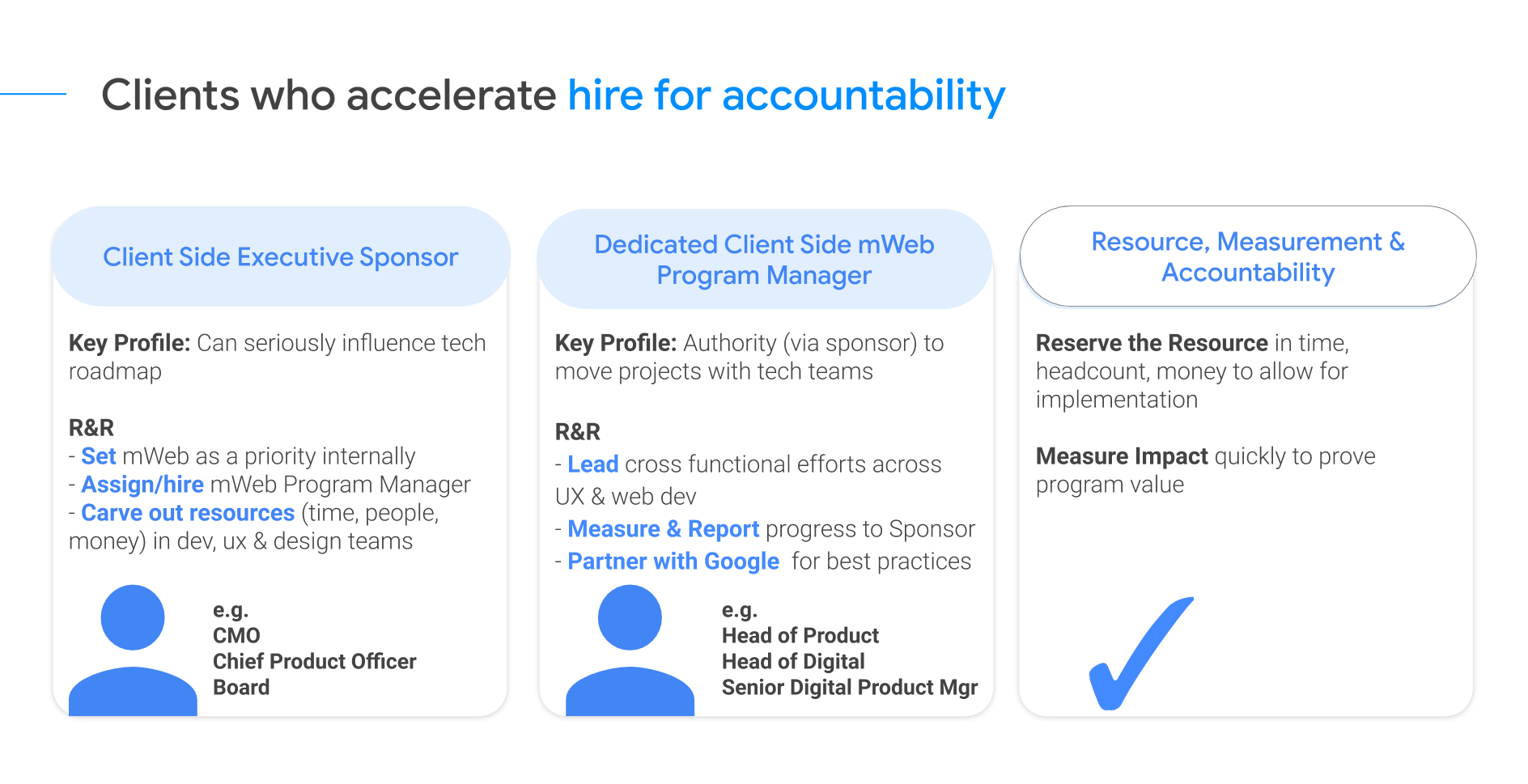“It’s the year of mobile...again.” Sound familiar? Our clients keep hearing the same thing, but what does it mean?
This is where our team of mobile specialists can help. Our team’s goal is to partner with businesses and help them to provide the best user experience for their customers on mobile via great UX, fast websites and engaging features.
Over the years we have met with hundreds of UK businesses across all industries and we’ve identified some core themes, mindsets and blockers they face. We’ve put together this guide to show you what we’ve learnt and help you overcome “the problem with mobile.”
Step 1: Identifying The Challenge
When companies claim they are ‘mobile first’, what does that really mean?
Most websites are not built for mobile and, beyond basic web development, mobile can often be an afterthought. We understand it’s not always easy to be a technology-first company if you’re not, well, a technology company, so resource can often be an issue for a lot of businesses. There are often a number of different departments contributing to the mobile offering. CEOs, marketers and web developers all have different goals, which means projects can get complex, and consideration of the user journey can fall by the wayside.
As a starting point, we recommend you analyse your mobile infrastructure and identify any challenges you have.
Step 2: Tackling the Beast
“We’ve identified we have to do something, but where do we start?” We hear you ask.
The most successful companies get buy-in from a senior stakeholder as a first step. Heads of businesses need to acknowledge that there’s room for improvement and give their support before the project starts. Here are a few ways you can inspire a cause for change:
User Observation: Record videos of users on your site to see how they navigate it. Are there any particular sections that they find harder to navigate than others?
Check Out the Competition: The Mobile Speed Scorecard is a great tool to measure how your speed fares compared to your competitors. You can also check out other big players across all industries to see where users are spending their time.
Tie it to Business Metrics: Work with your dev teams and analysts to understand how speed affects conversion rate.
Whilst convincing stakeholder teams - successful mobile teams get the right attention and sponsorship. Below is an example of how they may hire and report up.

Step 3: Pairing the Technology to the Business Need
Our clients have optimised their sites in different ways and we’ve found that user testing and analysis is a great way to identify what the user actually needs to have a better experience. What is confusing them? When are they leaving? Do you need to bring them back?
- UX Design: Review the basics - is what you’re designing what users are expecting from your site?
- Site Speed: After testing your site to see how you stack up, learn more about recommendations for custom fixes. You can also generate a free report to share with your team to get started.
- Accelerated Mobile Pages (AMP): Instant page load for your users - simple landing pages best used for driving leads, but retailers are using these now for category and product pages.
- Progressive Web Apps (PWA): Fast pages with functionality that has been proven successful in native apps, including offline mode, add to homescreen and sending push notifications.
Step 4: Strategically Rolling Out the Innovation
- Scope the project: Understand the technical barriers and how to navigate these to roll out the project to your whole site.
- Measure from the Outset: Clients that have the proper metrics agreed with their stakeholders have the greatest understanding of success.
- Test for Proof of Concept: Be sure to test revenue driving parts of your site, rather than simply proving the technology went live. For example, testing AMP on a category landing page with traffic would likely show higher impact to the business than a page that is undiscoverable. This will prove your concept and allow make your case for further scale.
Step 5: Maintenance is Crucial
Companies that don’t build maintenance into their long term strategy risk having to repeat all their hard work a year later, so create a culture and monitoring effort that keeps this all in check. Read this performance budget piece for more information.
For more inspiration and case studies click here.




